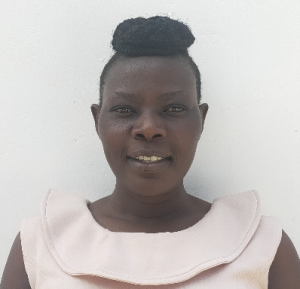"Water being a scarce commodity in our institution, I'm forced not to take water even if I feel thirsty for the fear of contracting waterborne diseases. This forces me to carry water for drinking from home which is so tiresome," reported Gladwell, a student at Khungoyokosi Muslim Primary School.
"I have been receiving complaints from parents since accessing water is also a problem at home. Making students carry water to the school puts more strain on them during the day. We are also forced to adjust our timetables which makes it difficult to complete the syllabus," said the school's Head Teacher Saidi Olacho.
The more than 800 students and teachers at Khungoyokosi Muslim Primary School face a severe clean water shortage every day. There is no source of water on campus, forcing the school to require students to carry water from home every day, at least twice a day. As Gladwell and Mr. Olacho explained, this affects the entire school, and each individual, negatively. With each trip home, students miss class time, the school meals program delays while waiting for the students' water to use for cooking, and students grow tired and discouraged from their long daily walks carrying their heavy jerrycans full of water.
"The water is not safe for consumption since the containers used to carry the water from home are not clean and also without covers. I could not drink the water because, from the teachers' remarks, it seems some students bring water from unknown sources which makes it riskier if taken," noted team member Joyce Naliaka following her recent visit to the school.
Students visit health facilities very often due to waterborne diseases such as typhoid, cholera, and many others caused by drinking the water that they carry from their homes. These illnesses keep students out of school while they recover and drain their families financially as they pay for treatment.
Khungoyokosi Muslim Primary School was established in 2012 by a group of Muslim community members who founded the institution as a community school. The school started with a population of 200 pupils and has been growing gradually since there are no other schools around the area. Due to a lack of infrastructure, it has taken the school several years to host students ready for their national examinations. This year was the first time students from Khungoyokosi Muslim Primary School sat for their KCPE exams, a big milestone for the school. The candidates performed so well with a high mean score, attracting more pupils to the school.
Teachers and administrators know that having a source of water on campus will only help improve their rate of student retention and students' academic performance.
What We Can Do:
Two Rain Tanks
Two 75,000-liter rainwater catchment tanks will help alleviate the water crisis at this school. The school will help collect the needed construction materials such as sand, bricks, rocks, and water for mixing cement. We will complement their materials by providing an expert team of artisans, tools, hardware, and the guttering system. Once finished, these tanks will begin catching rainfall that will be used by the school’s students and staff for drinking, handwashing, cooking, cleaning, and much more.
We and the school strongly believe that all of these components will work together to improve standards at this school, which will lead to better student academic performance and help to unlock the potential for these students to live better, healthier lives.
Handwashing Stations
The student health club will oversee the two new handwashing stations we will provide, and make sure they are kept clean and in working condition. The club leaders will fill the handwashing stations with water daily and make sure they are always supplied with a cleaning agent such as soap or ash.
VIP Latrines
Two triple-door latrine blocks will be constructed with local materials that the school will help gather—one block for girls and one for boys. All of these new latrines will have cement floors that are designed to be easy to use and clean. And with two rain tanks right on school property, there should be enough water to keep them clean.
Training on Health, Hygiene, COVID-19, and More
We will hold a one-day intensive training session with students and teachers. This training will cover a wide range of topics including: COVID-19 symptoms, transmission routes, and prevention; personal and environmental hygiene; and the operation and maintenance of the rain tanks, latrines, and handwashing stations. There will be a special emphasis on handwashing.
Our team of facilitators will use a variety of methods to train, including participatory hygiene and sanitation transformation, and asset-based community development. We will initiate a student health club, which will prepare students to lead other pupils into healthy habits at school and at home. We will also lead lectures, group discussions, and provide illustrative handouts to teach health topics and ways to promote good hygiene practices within the school, like handwashing and water treatment. We will then conduct a series of follow-up trainings before transitioning to our regularly scheduled support visits throughout the year.

 Rainwater Catchment
Rainwater Catchment
 Rehabilitation Project
Rehabilitation Project



































